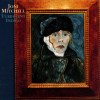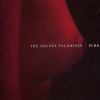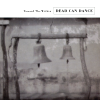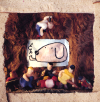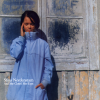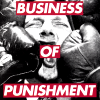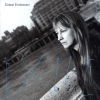

Oops! I’ve totally messed up my sleeping again. But I’ve got comics to get me through the night…
| Various: A Message To The People: A Tribute To CONSOLIDATED! |  |

02:49: Stripburger #48
I recently remembered that Stripburger still exists, so I got a bunch of issues. Here’s the oldest in the batch — from 2008.

This issue has a focus on Norwegian and Baltic comics (but in English, of course).

Very odd!

But there’s also stuff from Russia and Poland and even Brazil.

The last third of the book is in er Slovenian, but there’s a booklet included with translations. That’s too much work — I’m lazy — so I skipped this bit.
It’s a pretty good anthology, but it seems pretty scattered, and there’s several pieces that just aren’t… all there.

03:14: Down to the Bone by Catherine Pioli (Graphic Mundi)

The translation sometimes seems really weird here… “the forest of our hair”? Some idiom that’s mistranslated?

Anyway, this is really stylish — perhaps Pioli has a background in fashion art or something? Her storytelling is really on point — it’s brisk, funny and very moving.
The book doesn’t really have an end as such — she started drawing the book when she was first diagnosed, and it just stops when she dies.
*sniff*
| Caroline Shaw & Attacca Quartet: Evergreen |  |

04:01: Francis Rothbart! by Thomas Woodruff (Fantagraphics)
What a massive book. It’s yuge.

Well, this is uhm er curious. It’s a story about a boy being raised by wild animals, but in a feverish fantasy way.

And I guess the artist just had a few of these paintings that weren’t really related, but he stuck them in here anyway, with some “legends” to accompany them?
It was at this point I lost faith in the book and grew impatient.

The text swerves between quotidian narration and this awful doggerel — while you could admire the obvious effort that’s gone into the artwork, it’s just a miserable read. (And might be illegal in some jurisdictions.)
The end, which devolves into one horrific atrocity after another, is … a lot.
Are you OK, dude?
No, really:
This grotesque-erotic epic will call to curious and particular collectors, while raising eyebrows and questions about the boundaries of art publishing.
| Ellen Arkbro & Johan Graden: I get along without you very well |  |

05:32: Delia by Hans Rickheit & Krissy Dorn (Fantagraphics)

Huh! This looks just like a oldee tymey 90s alternative comic? It’s also got that pacing down pat — a kind of quiet, ponderous storytelling style, which I quite like.

I’m wondering whether they’ve chosen to do squirrels just because their tails fill so much of the space in the panels. Don’t have to draw as many backgrounds. Sneaky!

And then it turns into a Godzilla/robot monster thing?!
As much as this is accomplished on a page to page basis, it’s hard to stay interested in the story. It seems like such a mish-mash of familiar tropes — when the FBI dropped by to accuse the scientists of being commies, it’s was just *rolls eyes* time.
It’s likeable, but it lacks zip and humour. Is that why it’s published on the Fantagraphics Underground label?
| Joni Mitchell: Archives: The Reprise Years (5) |  |

06:23: Pandora’s Eyes by Milo Manara with Vincenzo Cerami (Humanoids)

Hm… this looks like quite old Manara — from the 70s? And it’s quite different from the previous lavish Humanoids albums of his — the colouring is kinda subdued and muddy and odd.

I’m guessing he didn’t write this himself, because the storyline is very un-Manara-ish. I.e., there is a storyline.
No, this is apparently from 2007? Urr… that can’t be true: Everything looks really 70s. Not just the artwork, but the cars, the clothes, etc. Perhaps it was first published as a stand-alone album in 2007, and was perhaps published in an anthology in the 70s?
| King Crimson: The Complete 1969 Recordings (14): Sessions 2 |  |

06:54: Les Innomables 1 by Yann & Conrad (Zoom)
This is a series I’ve never heard of before, and it turns out to have a pretty interesting history. It debuted in the Spirou magazine in the early 80s, and was explicitly a revolt against the staid material the magazine was carrying at the time. The older generation, who’d pioneered the children’s comics in the 50s and 60s had mostly stopped doing comics (or weren’t in their prime any more), and weak pastiches filled the magazine instead.
So Yann & Conrad wanted to stick it to the man, with a series with a bunch of nihilist anti-heroes, but mostly by upping the violence and adding *gasp* sex. The reception from the audience was luke warm, and the third serial was cut short — because the publisher, Dupuis, had grown tired of the shenanigans, apparently (and was dropped on page 46, ten pages before it was scheduled to end).
Now I’m really curious to read this… I’m guessing it’s gonna be… not very good?

Yeah, I can see that this is a reaction against, say, Fournier’s Spirou — kinda hippyish, gentle stuff. On the second panel of the story above, the presumed protagonist is run over by a car; never to be seen again. So it works as both a parody and a commentary on the state of French(ey) comics…

… and it’s ever so risque, with a running gag about reading porn. But it tends towards being unreadable. It reads like if it was written by teenagers on Ritalin. There’s a new gag every other panel, but few of the jokes are actually funny.
They later did the somewhat notorious Bob Marone parodies, and they’re funnier, I seem to recall? Haven’t read them since the 80s…
*time passes*
Oh, once they got past the first couple dozen pages, the storyline started to cohere, and the gags got a whole lot better. Perhaps they just needed a few pages to warm up…

The second album here (with stylish black gutters) is a totally different beast. It’s got a real storyline, and instead of 100 indistinguishable characters, it’s got a dozen characters with character.

It’s both funny and has actual tension — there’s cannibals and traitors and stuff.
It’s… pretty good? Still somewhat exhausting, so I think I’ll save the last two albums in this collection for a later date.
| Various: FAC 51 The Haçienda 1982 (1) |  |

08:30: Les beaux étés 1 by Zidrou & Jordi Lafebre (Fahrenheit)

This is one of those nostalgic little dramas that the French (and Belgians) do so well.

It’s not very original, but it does have some flourishes that set it apart. But it’s mostly just very professionally done — it hits all the right notes for this sort of thing. It almost feels cynical: “Extruded nostalgic material”, but whatevs.
| Various: FAC 51 The Haçienda 1982 (1) |  |

09:07: Husvild by Lars Kramhøft (Fahrenheit)

Uhm uhm uhm I guess you could say that the artwork is itsy bitsy influenced by Kevin Huizenga? A tiny little bit? A smidgen?
| Arovane & Taylor Deupree: Skal_Ghost |  |

And it’s just kinda painful to read. It’s about a guy who’s supposed to be 30, but the entire book is stuck in the past. He wants to be a writer, so he namechecks Hemingway, Orwell and Bukowski… and rolls his eyes at Kids These Days With Their Instagram and stuff. Anybody over 60 would agree with him, but it’s just embarrassing to read.
I wonder if he felt it himself, because the book further devolves into drug deals, guns and the least convincing acid trips ever.
| PVA: Blush |  |

10:11: Tananarive by Sylvain Vallée / Mark Eacersall (Umpff)
Oh, yeah, I got a shipment from Denmark the other day…

Another one of these French books that read like French commercial movies…

Again, this isn’t very original, but it’s pretty well done. It gets really, really hokey as it goes along, though.
The comics this Daze aren’t… fantastic; let’s put it that way. Perhaps I should throw in the towel… OK, one more.
| µ-Ziq: Hello-Goodbye |  |

10:44: Clifton 1 by Macherot, Greg & Azara (ShadowZone)
I saw this for sale and I went “there’s something I will never, ever, no way, ever buy”.
Reader, I bought the book.
I remember Clifton from when I was a child. Even as a ten-year-old (who read absolutely all comics (I guess I haven’t changed much)), I found it to be pretty hokey.
So I think I haven’t read Clifton again since then, and… I guess I must just have been curious: Was it as bad as I remembered? And… why would anybody ever publish a collected edition of this series?

Oh, this isn’t quite the Clifton I’m familiar with — those albums were by Bob de Groot. This is by Macherot (of Chlorophylle and Sibylline fame), and is from 1959, when it was serialised in the Tintin magazine.
Perhaps this is gonna be good?
The colouring is a bit odd. These collected editions are usually super crisp… I guess it’s impossible that these are shot from the original printed albums? Yeah… I guess they just wanted a kind of muddled colouring?

And… it’s OK, I guess? I mean, for this sort of thing. It’s got a satisfyingly absurd plot, and the storytelling is quite nice.

And it has the requisite jokes about English weather (rainy) and food (bad).
It’s certainly better than I remembered the De Groot Clifton being. Hm. Perhaps I should buy the next volume in this series to find out if those albums are as bad as I think…
I think I’ll save the last two albums in this collection for later, though.
11:31: The End
And now I have to do other stuff.


























































































































